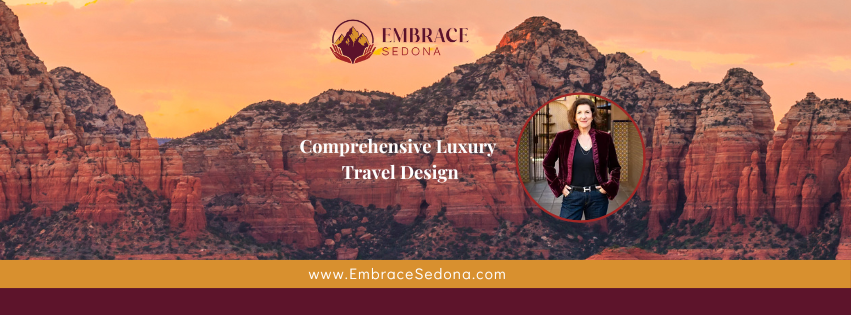A Surrealist Sanctuary: Exploring Max Ernst and Dorothea Tanning's Capricorn Hill in Sedona
- lauriteagan
- Jan 2
- 4 min read
Deep in the red rock landscape of Sedona lies a hidden gem of art history: Picked by the New York Times as one of the top ten sites in the world to learn about Surrealism, Capricorn Hill is the former home of surrealist masters Max Ernst and Dorothea Tanning and a mecca for cultural and artistic leaders in the mid-twentieth century. Today, under the stewardship of Mark Rownd—musician, composer, artist, and passionate art historian—this historic site offers visitors a unique journey into the heart of Surrealism's American chapter.
The story of Capricorn Hill is inseparably woven into the broader tapestry of Surrealism's connection to the American Southwest. Long before Ernst and Tanning arrived, the region had already captured the imagination of the surrealist movement through its deep ties to Native American culture. Carl Jung's transformative meetings with Hopi elders had profoundly influenced his theories on dreams and the unconscious mind, which in turn shaped Surrealist thought. The publication of Hopi Chief Don C. Talayesva's 1942 autobiography, "Sun Chief," further crystallized this connection, resonating deeply with Surrealists who, like the Hopi, saw no boundary between dreams and waking life.

Ernst and Tanning first met in New York while he was married to socialite and art collector, Peggy Guggenheim. Love at first sight led to a double wedding between Max and Dorothy and Man Ray and Juliet Browner in Hollywood in 1946. Ernst built Capricorn Hill with his own hands, creating a sanctuary where he and Tanning lived from 1946 to the mid 1950’s. During this period, their home became a magnetic pole for some of the 20th century's most influential artists and cultural figures. The guest list reads like a who's who of modernism: Dylan Thomas, George Balanchine, Man Ray, Lee Miller and Roland Penrose, Marcel Duchamp, Tanguy and Kay Sage, Henri Cartier-Bresson and many others. They joined a young artistic community that included local luminaries like Lillian Wilhelm Smith.
Since acquiring the property in 2021, Mark Rownd has transformed Capricorn Hill into a living museum. His guided tours are more than mere historical recitations—they're intimate explorations of Ernst and Tanning's artistic evolution and the profound influence of the Southwestern landscape on their work. Rownd's personal collection of art, photographs, and documents brings the era vividly to life, while ongoing archaeological discoveries on the property—fragments of sculptures and artists' materials—continue to add new chapters to the story.
The site serves as a testament to a remarkable period when Sedona became an unexpected nexus of avant-garde art and thought. Through Rownd's dedicated stewardship, visitors can experience firsthand the magical convergence of European Surrealism and Southwestern spirituality that made Capricorn Hill such a powerful creative crucible. It's a place where the past feels tangibly present, where the spirit of surrealism still whispers through the red rocks of Sedona.
Give yourself the gift of a personal magical journey into the history of surrealist art in Sedona with a visit to Capricorn Hill, the home of Max Ernst and Dorthy Tanning, led by Mark Rowand, a musician, composer, artist, art collector, art historian, educator and evangelist This experience not only explores the lives of surreal artists Max Ernst and Dorthy Tannings lives in Sedona but the evolution of Ernst as an artist, what brought Ernst and Tanning to Sedona and how Sedona became a magical retreat for many different artists of the period including Lee Miller, Roland Penrose, Dylan and Caitlin Thomas, Yves Tangay and Kay Sagem Charles Henri Ford, George Balanchine, Pavel Tchlitchewm Danny LeClercq, Caresse Crosby, Sonja Sekula, Andre Breton, Marcel Duchamp, Henri Cartier-Bresson and Igor Stravinsky. Others like Lilian Smith already lived in Sedona at the time of Ernst and Tannings arrival.

The magical role the southwest plays in art history and surrealism in particular didnt start with Ernst. Prior to Ernst and Tanning’s arrival, there already existed a significant link between the Southwest and Surrealism. Surrealism really started with psychoanalyst Carl Jung. Jung had met with the Hopi elders who profoundly influenced Jung theories regarding dreaming and psychoanalytic theory. The Surrealists also read Hopi Chief Don C Talayesva’s 1942 book, Sun Chief:The Autobiography of a Hopi Indian. As Mark explains, “the surrealists had a synergy with the Hopi, who like the surrealists didn’t differentiate between dream life and waking life.”
In 1922 Mark Rowand and his partner bought Capricorn Hill. The house had literally been built by Earnest with his own hands and was where he and Dorothea from1943 and to 1959 when they sold it Ernst son Jimmy. In this oasis of art, history and culture, Mark weaves the story of Ernest and Tanning, the incredible lives they led and their influence in art and culture both in Sedona and beyond. Mark shares his own art collection, photographs documents and books regarding surreal treasures and the history of the house and times, most of which have become part of the non-profit museum Capricorn Hill has become. In addition to the pieces he has purchased, Mark continues to excavate the land and discover pieces old sculpture, materials used by Ernst and Tanning continually adding to the history and treasure of Sedona.
Make sure to sign up for my travel blog today!
Learn more about all of the amazing places to visit in
Northern Arizona.
Let's Chat
Interested in a free 30-minute consultation?





Comments